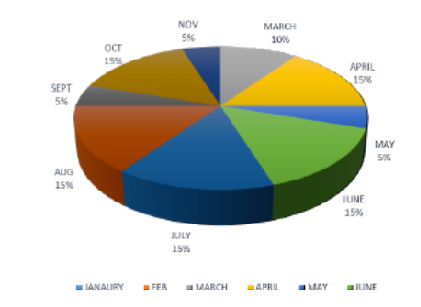


Indian Journal of Science and Technology
DOI: 10.17485/IJST/v16sp1.msc21
Year: 2023, Volume: 16, Issue: Special Issue 1, Pages: 148-157
Original Article
Lalremruati1*, Lallawmsanga1, Lalhmingsangi2, Zosangliana Ralte2, Laldinpuia1
1Centre for Disaster Management, Mizoram University, Mizoram, India
2Department of Geology, Mizoram University, Mizoram, India
*Corresponding Author
Email: [email protected]
Received Date:23 January 2023, Accepted Date:09 June 2023, Published Date:10 September 2023
Objectives: Sairang, a town in Aizawl District, drained by the longest river in Mizoram-Tlawng River has been re-currently affected by floods since time immemorial. A study was conducted to determine the causative factor, impacts and possible risks associated with the flood. Methods: Data were collected from several government offices. An open-ended interview was conducted with NGO leaders. Daily rainfall data of Aizawl for the period of 2007-2021 were considered to evaluate how intensity, frequency and duration of rainfall influenced flood events. The date of the flood event in a flooding year was correlated with the amount of rainfall in a particular day which is represented in the graph chart. An experimental survey using Total Station and Differential Global Positioning System was carried out at times when the flood was at an alarming rate. The survey was conducted so as to detect and determine the river line and land cover area during floods. Contour and 3D maps were generated in Arc GIS 10.8. Findings: Tlawng river and the river system provide a lot of benefits and highly support the economic condition of the population. But unfortunately, on the contrary, deteriorate and terminate in times of flood. Hundreds of farmlands were damaged, sand miners could no longer perform their job- consequently freezing one’s income- further escalating the misery. The frequency and return period of flood depicts enormous alterations and fluctuations; disregarding indigenous knowledge which maximizes the flood risk. Flood has been the most widespread and costliest disaster in Mizoram in terms of economics. Sairang Police Station’s records have shown that 50% of drowning accident in the Sairang Tlawng river occurs during the month of the flood period. The amount of rainfall in a day greatly influences the situation of flood in the study area. The topography has highly governed the magnitude of rising and receding water levels of the river. The imprint of Flood and land cover could be detected in the absence of a River gauge and subsequently from an inaccessible point of the area. Risk is maximized due to lack and gaps in building Community-based Disaster Management strategies which could encompass the farmers and the local community as well. Novelty: As the study employedmulti-approach investigation, emphasis was laid in several aspects and various dimensions. Examination and investigation were conducted covering both the scientific approach and societal approach. Measures and strategies adopted at different levels were also considered.
Keywords: Sairang; Flood; ArcGIS; DGPS; Total Station
© 2023 Lalremruati et al. This is an open-access article distributed under the terms of the Creative Commons Attribution License, which permits unrestricted use, distribution, and reproduction in any medium, provided the original author and source are credited. Published By Indian Society for Education and Environment (iSee)
Subscribe now for latest articles and news.